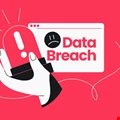Infosecurity Blogs

The Growing Threat of Application-Layer DDoS Attacks
Protection vendors have made great progress in the past year but this has forced hackers to scale up their attack methods

How Security Leaders Can Break Down Barriers to Enable Digital Trust: Part 2
ISACA's Pam Nigro and Rob Clyde discuss the importance of breaking down silos, leadership and incident response in driving digital trust

Emerging Threats: Preparing for the Cybersecurity Challenges of 2024
This article discusses emerging cybersecurity threats in 2024, including credential stuffing, ransomware attacks, insider threats, and the impact of AI

Understanding Risks on the SaaS Attack Surface
With SaaS app owners mostly sitting outside of IT, the SaaS attack surface is an open target for cybercriminals

How to Import OST Files into Outlook
Learn the ways to import OST files into an outlook account with step-by-step instructions

Are DDoS Simulation Tests Actually Legal?
Since DDoS simulation tests are carried out with the knowledge and approval of an organization, they are considered a legal activity. But still, you do want to ensure that DDoS test simulation are secure, authorized and risk-free

Beyond Cookies: How to Enable Secure Navigation of the Web
Javvad Malik asks what more the cyber industry must do to help users navigate the internet securely

RSA eBook Details How AI will Transform Cybersecurity in 2024
RSA CEO Rohit Ghai discusses how AI will revolutionize cybersecurity in 2024. Drawing on a conversation with ChatGPT, Ghai explores the rise of AI-driven cyber threats, emphasizing the need for AI in cybersecurity defenses

Planning for Human Error: Optimizing Mobile Devices with Digital Identity
This article discusses the challenges posed by human error in enterprise-owned mobile device usage and highlights the benefits of adopting a digital identity strategy

Navigating the DORA Regulation: What UK Finance Firms Need to Know
Harman Singh sets out how UK financial services can achieve compliance with the EU's DORA regulation ahead of the 2025 deadline

AI And 5G are Defining a New Era of Cybersecurity: The Industry Must Collectively Adapt
5G and AI create an impression of boundless innovation, but without security, the hard-earned reputation of any company can unravel

How do I Repair Outlook PST File?
Understand the common reasons behind the Outlook PST file corruption and the methods to repair corrupt Outlook PST file

Upskill in Cyber Career Fair helps Address Shortage of Critical Cybersecurity Skills in the UK
The upcoming virtual Career Fair at the end of January provides UK employers with the opportunity to meet with GIAC-certified candidates

Emerging Threats and Opportunities in the AI Cybersecurity Revolution
Raef Meeuwisse says organizations must stay abreast of rapid changes in AI to maintain effective cybersecurity

Battling the Exploitation of Cloud Services in Global Conflicts
Paolo Passeri says organizations must understand the full threat of cloud services and how they are used in global conflicts

How to Rebuild SQL Database with Corrupted or Deleted Log File
In this article, we’ll discuss how to rebuild SQL database when log file is corrupt

Infosecurity Magazine's Top Cybersecurity Stories of 2023
The top 10 most read cybersecurity stories of 2023, based on your readership

Is Your Data AI-Ready?
Addressing privacy and security concerns associated with AI implementation should be at the top of the agenda for CISOs

Why People-Centric Security and Privacy Programs are Vital
Technology alone cannot provide foolproof protection, people need to be at the center of security design

Have We Reached a Data Breach Respite at the End of 2023?
Despite significant breaches this year, data breach statistics show a positive trend in Q3 2023 with a 76% decrease in leaked accounts


















